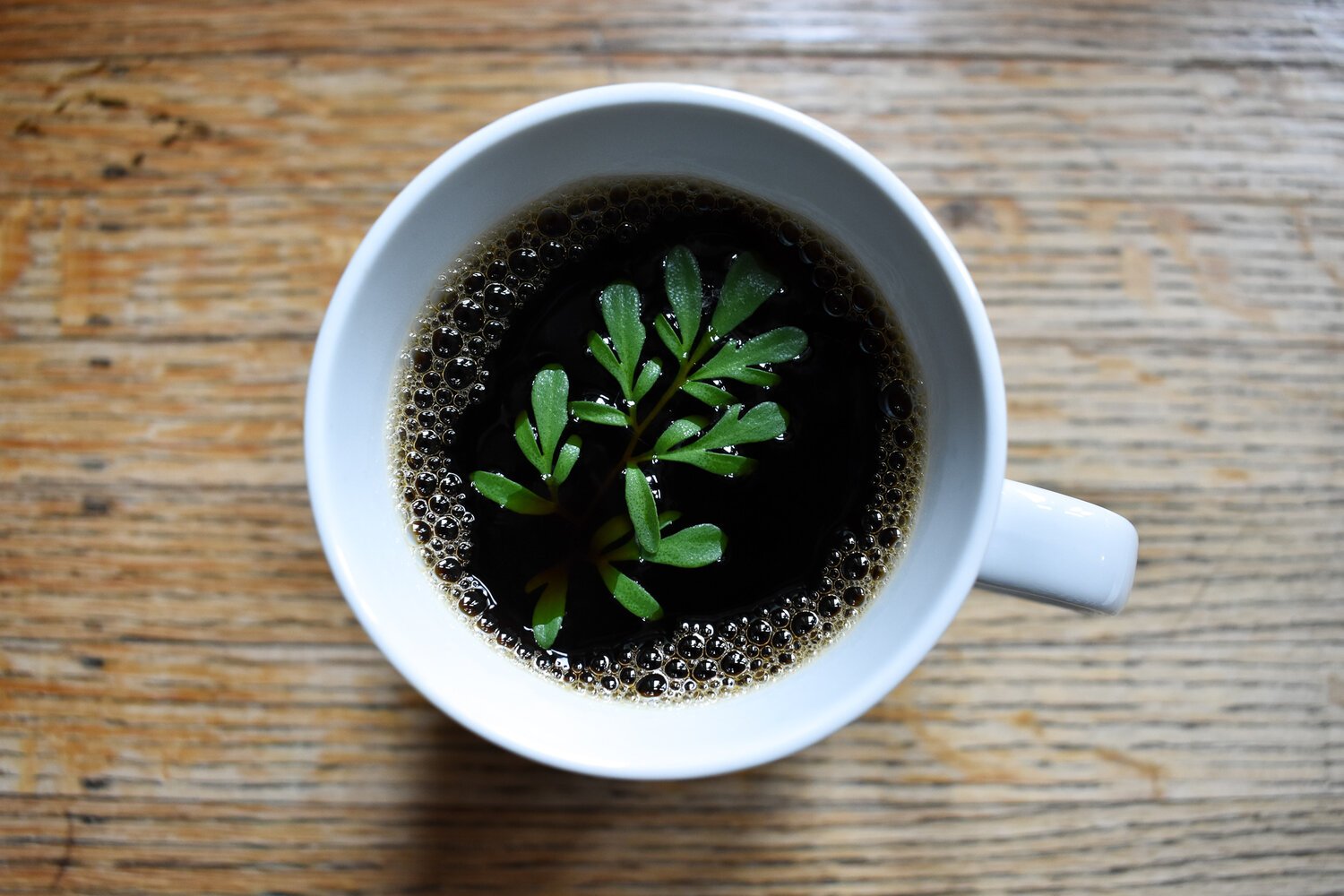Drying Garden Herbs
Many people have herb gardens. Herbs are generally easy to grow, don’t take up much space, and some herbs can be grown indoors on a windowsill. You are probably familiar with the popular herbs, such as rosemary, oregano, cilantro, dill, and thyme, but what about the lesser-known herbs? We have a few in our garden you may not know much about.
RED-VEINED SORREL IS PROBABLY THE MOST VISUALLY PLEASING IN THE SORREL FAMILY
Sorrel
Sorrel is found throughout Europe and the Mediterranean. It is not native to Canada, but has been naturalized in North America, Australia, and New Zealand. The leaves are edible when young and have a sour taste. In Medieval Europe sorrel was used to add tang to dishes prior to citrus being introduced. It is best used sparingly and is most commonly found in soups and paired with fish. The sorrel in our garden is red-veined sorrel. Sorrel is best when harvested May-June.
PICKING LOVAGE WILL MAKE YOUR HANDS SMELL LIKE CELERY
Lovage
Lovage is a hardy plant that is particularly popular in Southern European cuisine. It originated in the Mediterranean and West Asia but has been naturalized throughout the rest of Europe and in North America. In fact, it has been said that the Romans brought lovage to Britain. It is completely edible; the leaves can be used as an herb, the roots as a vegetable, and the seeds as a spice. The taste is described as a cross between celery and parsley. Lovage is good in soups and salads, and in the UK alcoholic lovage cordial can be added to brandy to create a winter drink.
IF YOU PLANT VALERIAN IN YOUR GARDEN YOU MIGHT FIND YOU BECOME POPULAR WITH NEIGHBOURHOOD CATS AS THEY LOVE IT ALMOST AS MUCH AS THEY LOVE CATNIP.
Valerian
Valerian is perhaps the best known out of the herbs mentioned in this article because of its reputation as a sleep aid. Using oil from valerian root has been prescribed as a cure for insomnia since Roman times. It is native to Europe and Asia but has been naturalized in North America. Valerian leaves can also be used in tea. It is advised that you talk to a medical professional first if wanting to use valerian for these purposes. Valerian flowers are very fragrant and nice-smelling.
RUE: HANDLE WITH CAUTION
Rue
Rue originated in the Balkan Peninsula, but is now grown around the world. In Ancient Rome it was used as an ingredient in poison antidotes. During the Plague it was strewn on the floors of homes to keep sickness out. It was also thought to keep away witches. Rue is bitter, which is why it has fallen out of favour in the culinary world; however it is still used in Ethiopian cuisine, and there it is common to add a fresh sprig of rue to one’s cup of coffee before drinking.
NOTE: Rue sap can cause blistering and burns to skin, so please handle with care.
Rue in Coffee
The coffee drinkers at Coquitlam Heritage decided to try adding a sprig of rue to their daily cup.
Tannis described it as “Horrible.”
FRESH RUE ADDED TO BLACK COFFEE
Nolan and Abby could not taste the difference at first but liked that they could smell the rue as they took a sip. They both let the rue steep longer and both enjoyed the subtle herby taste it added to the coffee. Nolan could see easily adapting to adding rue to his coffee if he were to be somewhere where it was common. Abby thought that she would definitely try it again, although generally she would not go out of her way to put rue in her coffee because there wasn’t that much of a difference.
How to dry herbs in the oven
FROM LEFT TO RIGHT: VALERIAN, LOVAGE, SAGE, ROSEMARY
Drying herbs by hanging them in a well-ventilated area is great, but it can take up to a week. Drying herbs in the oven is a much faster way to preserve them.
Preheat your oven to a low temperature, below 180°F. The oven at Mackin House tends to run a little on the cool side, so it was set to 180°.
Pick the leaves or seeds you want to dry and spread them out in one layer on a cookie sheet.
Bake until the leaves are dry. Test for doneness by crumbling a leaf. If it crumbles easily, the herbs are sufficiently dried. The amount of time depends on the moisture content of the herbs and the amount being dried. We dried a small sample and it took about 45 minutes, but drying can take up to four hours.
Dried herbs are best stored whole in an airtight container and crumbled when needed. They are best used within one year.






